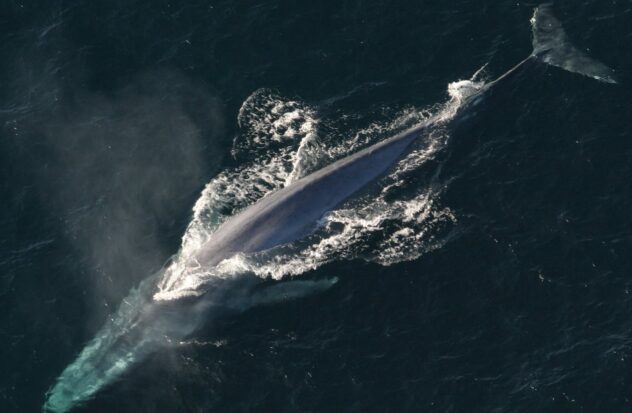And study led by Australian scientists suggests that The population of blue whales in the Antarctic Ocean is recovering. This animal used to roam the southernmost sea in the world, but whaling reduced its numbers. However, researchers have now recorded a increase in whale songs in the areaindicating that the number is stable or increasing.
The largest animal that has ever inhabited the planet seems to be recovering its usual routes. The study has analyzed almost 3,900 hours of sounds emitted by whalescollected by underwater microphones, and concludes that either the specimens are increasing or the ability to find whales has grown, according to Brian Miller, senior research scientist at the Australian Antarctic Division. Both are good news.he assures.
Specifically, researchers have spent more than eight months at sea, in seven voyages that have included almost 150,000 kilometers around Antarctica, analyzing the sounds collected by floating sonobuoys that have served as listening points that detected the sounds of Antarctic blue whales. This system even allows us to locate the animal: We can listen to them reliably, navigate towards them and see them visually, then photograph them and follow them, and even take small biopsies of your skin and fat to study them further.
In this way, whale songs They have been heard more frequently between 2006 and 2021. For years, hunting reduced the population of Antarctic blue whales, a subdivision of the species, to 2,000 specimens, according to estimates published in 1998. Although it cannot be said that the number has increased, the study assures that whale song was predominantly greatest in Antarctic regions where comparisons with previous research were viable. This is what a blue whale sounds like:
This is the first indication of what is happening with Antarctic blue whales… in a good 20 years (…) All the previous work was based on the 1950s, when we were killing them, says Professor Robert Harcourt, a marine ecologist at Macquarie University. In accordance with the International Union for Conservation of Naturethe blue whale is still in danger of extinction, but its population is increasing, with a number of copies between 5,000 and 15,000.
If you think about our almost annihilation and extinction, then it becomes more moving to think of them saying: I’m still here, here I am, Miller concludes.
Follow the Diario AS channel on WhatsAppwhere you will find all the sport in a single space: the current news of the day, the agenda with the latest news of the most important sporting events, the most outstanding images, the opinion of the best AS brands, reports, videos, and some humor from time to time.



